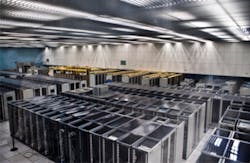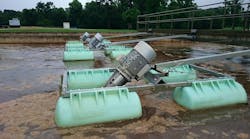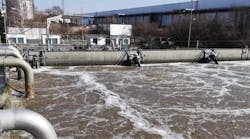AMI systems can provide water utilities numerous benefits, including increased operational efficiency, improved customer service and reduced water loss. However, the risk of these systems being compromised by outages, equipment failures and network impediments can increase when utilities host their networks in-house.
Due to AMI’s role of helping utilities account for water they provide (the Water Research Foundation and other industry groups sometimes refer to smart metering systems as “cash registers”), utilities should strongly consider having their vendors host and manage their network. This approach is increasing among water utilities throughout the U.S. — a list that has recently grown to include the village of Frankfort, New York, Bentonville, Arkansas and Weatherford, Oklahoma — and can help bolster AMI’s performance and reliability, while enhancing the cost savings it provides.
Improved reliability
Utilities can help ensure business continuity by employing an AMI provider for system management and hosting. Certain vendors use server space at enterprise class data centers to support their customers’ AMI networks, providing secure server environments that store all incoming metering data critical to utilities’ billing processes. These server environments can also provide the necessary IT backups and redundancies to help reduce the risk of network failure.
Some AMI web browser interfaces enable access to system data inside and outside utility offices. With a utility-managed site, users might only be able to access metering data stored in their utility’s own server through one or two network providers. If one of these routes is down or experiencing high volumes of user traffic, access to data may be delayed; if one or both providers are down due to maintenance issues, users may not be able to access the data at all until at least one of them are back in service.
Conversely, some managed hosting environments leverage as many as 12 different internet routes in order to help mitigate the risk of network failure associated with relying on only a small number of routes. Many of these services also feature advanced route optimizer technologies that constantly analyze network performance characteristics in real time to ensure that metering data is being accessed through the fastest, most reliable networks available.
In-house servers that support AMI networks are also vulnerable to natural disasters and power outages, which can temporarily or even permanently compromise data storage and access. Fortunately, AMI vendors offering network hosting services often use multiple data centers in different geographical locations to backup stored metering data. The advantage of this “diversified” approach helps ensure utilities’ ability to access data and avoid the potential pitfalls of being hinged to only one or two servers.
Enhanced network performance
Network monitoring is another advantage of vendor-managed services that helps strengthen AMI performance and reliability. In order to effectively manage their own AMI networks and server environments, utilities often need internal resources with multiple skill sets, such as highly specialized IT infrastructure engineers, database administrators and metering network specialists.
Utilities’ IT infrastructure engineers are usually tasked with installing necessary AMI software and conducting server maintenance and repair projects; metering network specialists typically focus on making sure the AMI network and its components are running smoothly and delivering all of the critical metering data necessary for the utility to accurately account for all of the water its customers are using.
Essentially, managed hosting and monitoring services shift the bulk of day-to-day tasks associated with AMI network management from the utility to the vendor. Many vendors have their own metering network specialists who focus exclusively on monitoring customers’ AMI networks to make sure that all components and metering devices within the systems are properly functioning and transmitting data. They also focus on identifying and mitigating potential network impediments that may be responsible for preventing the delivery of data.
For example, if an AMI specialist noticed that a customer’s AMI network was down, it could inform the utility and temporarily re-route meters in the area to different collector devices until a field worker was dispatched to make necessary repairs. If the specialist noticed that the network was not receiving scheduled data transmissions from a particular meter, it could troubleshoot the problem by sending a signal to the meter through the network requesting an on-demand reading. Analysis of the reading could help determine the meter’s signal strength or the need to send a field worker to see if the meter or radio transmitter had been tampered with.
Such has been the case for municipalities including the city of Weatherford, Oklahoma. The city’s water department knew that its water system had become outdated, as the 5,500 meters in its service area had been installed 20 to 40 years ago. Many of the meters were not reading accurately, which made receiving frequent complaints and questions from customers regarding their water usage a common occurrence. The department was also spending an increasing amount of time manually collecting meter readings (one to two days each week) and tending to service related issues. As a result, it replaced all of its water meters and implemented a two-way AMI network, which was hosted and supported by the vendor, to help efficiently improve customer service, conservation and operational efficiency.
Since the completion of the project, the water department now collects monthly readings from all of its water meters in less than one day (from the office), and receives alerts through the system and from the vendor whenever its meters show abnormally high readings. Once these alerts are received, the department can inform the customer that they may have a household water leak, or if necessary, dispatch a field crew to investigate the issue. Customers can also monitor their household water consumption through the networks’ consumer portal, which is also hosted by the vendor to help ensure they can quickly and reliably access their usage data.
“With a two-way AMI system in place, we’re now able to collect all of our meter readings in as little as one day,” says Mike Brown, the mayor of Weatherford. “The streamlined meter reading process coupled with network monitoring services provided by our vendor essentially enables our water department to work smarter — not harder. The AMI network presents the water department personnel with a centralized view of the water system, and the monitoring services provide a significant time savings that allows them to focus on other important improvement projects.”
Similar to how vendors’ network specialists constantly monitor customers’ AMI networks, IT infrastructure engineers at the data centers they partner with monitor the server environment 24/7 and troubleshoot and address any IT issues as they occur. In addition, these professionals work in tandem with the vendors’ metering network specialists to implement additional AMI applications, including necessary software installations and upgrades.
Increased time and cost savings
By having AMI vendors assume the role of network hosting and monitoring, utilities can experience significant time and cost savings they would likely not see if they managed and hosted their own AMI networks. Because vendors often support hundreds of other utilities’ AMI networks, utilities can benefit from economies of scale that allow them to utilize AMI at what is often a lower cost than if they chose to support their own networks. This is because they do not have to purchase their own server space or hardware, nor do they have to employ their own IT engineers and specialists to manage and monitor their network. Instead, the vendors incur these costs, which are shared among hundreds of other utilities that also employ their services.
In conclusion, utilities can enhance their AMI systems by using network hosting and monitoring services offered by their vendor. By deferring to the vendor, they can improve cost savings as well as network performance and reliability, while allowing themselves to spend more time focusing on other water system improvement projects instead of constantly monitoring their distribution network.
Jackie Lemmerhirt is vice president of Software for Mueller Systems, a leading provider of innovative water infrastructure products and services and technologically advanced metering systems for water and electric systems. www.muellersystems.com.


